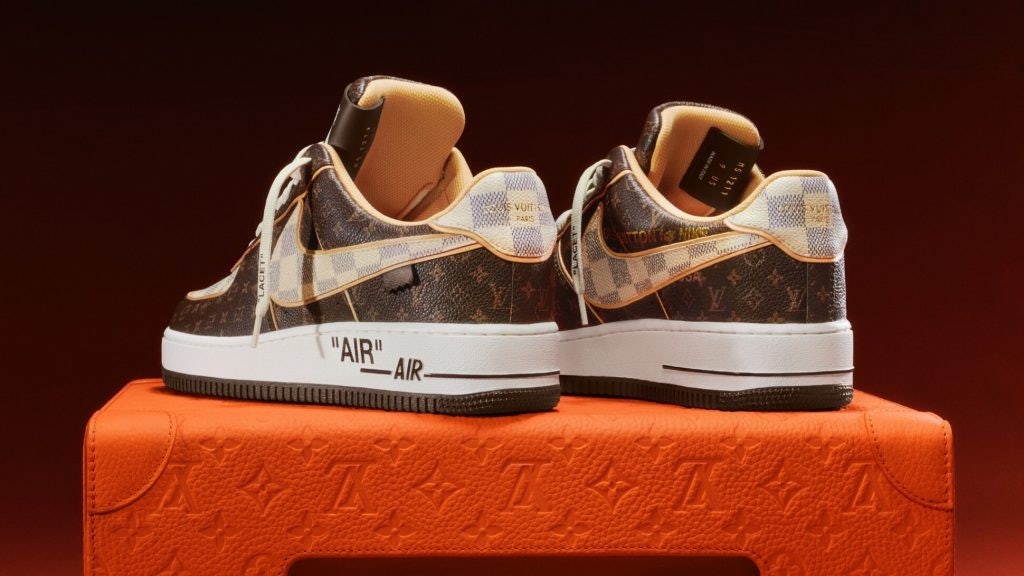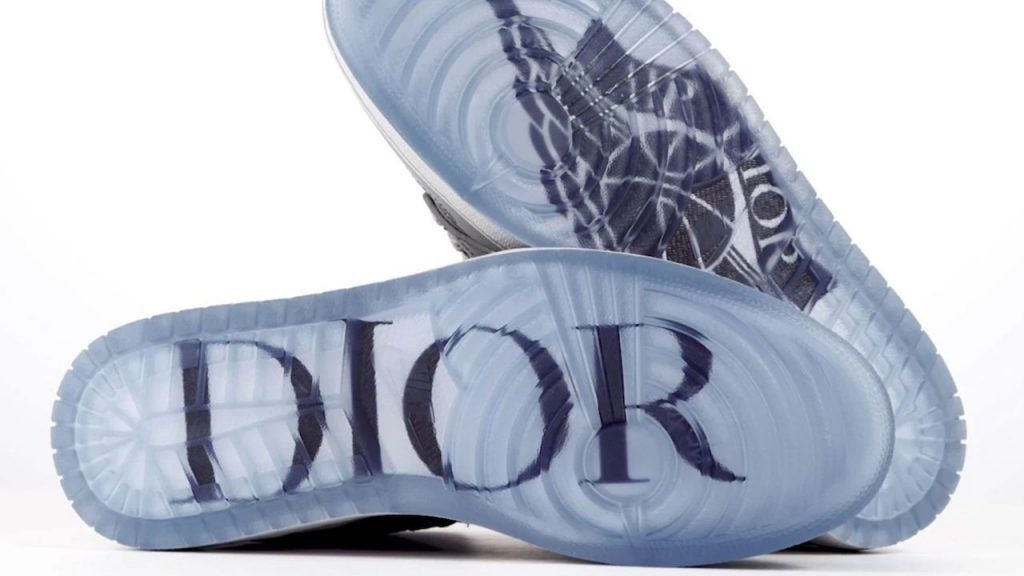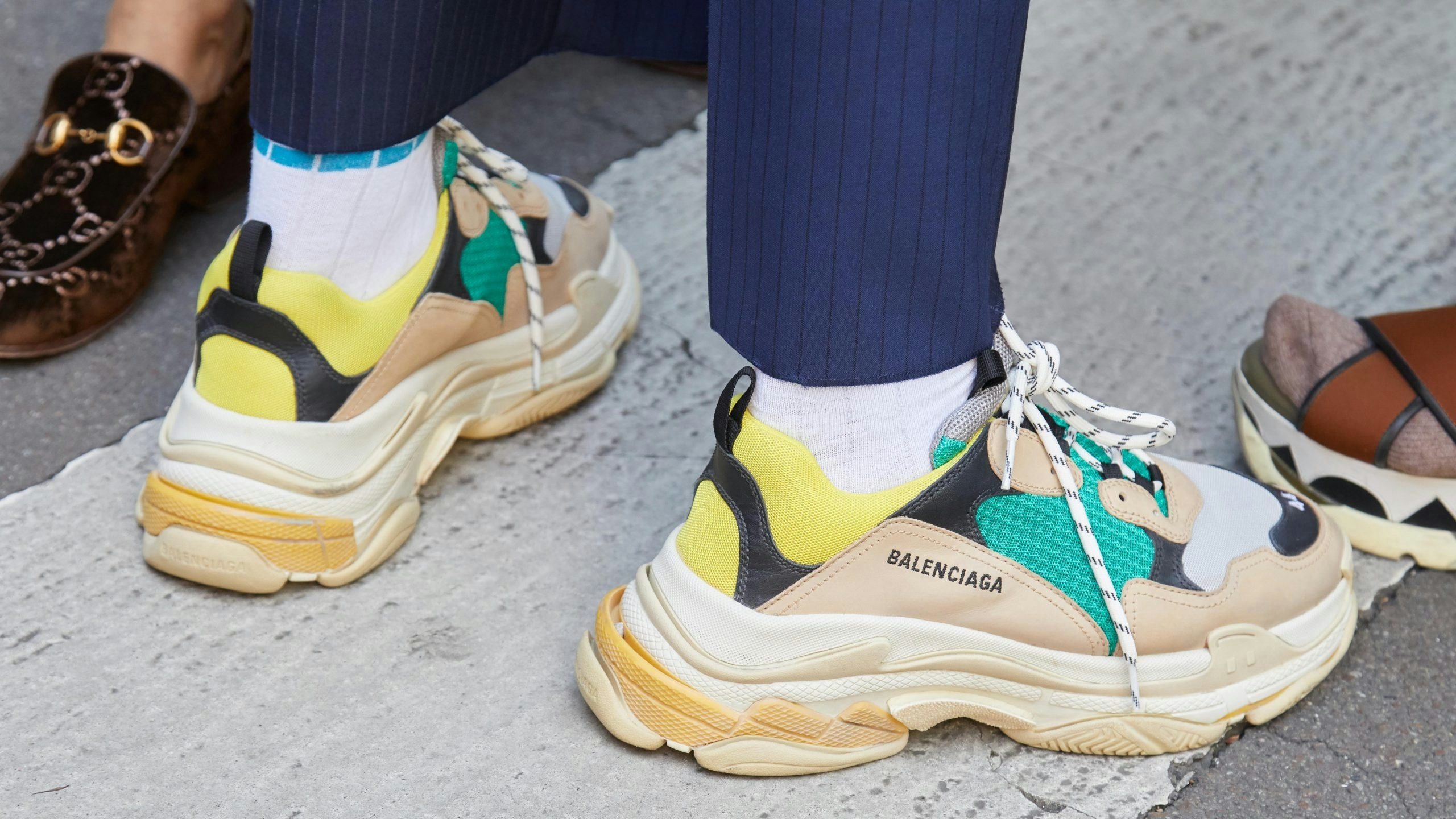Sneakers used to be functional and typically cheap. Now, they’re a luxury item coveted worldwide. How did this happen — and what can it tell us about the future of fashion?
Recently, while traveling back from Monaco, I was waiting at the airport in Nice for my flight. A couple were standing next to me, both were wearing matching Louis Vuitton sneakers. This did not go unnoticed. Another passenger approached them, and her comment was, “these shoes are dope.” A few days earlier, in London, during a conference with crypto and NFT investors, the audience was mainly composed of top managers of family offices. While their suits were meticulously tailored and their white shirts impeccably pressed, one item stood out more than anything else. Not the watches — but sneakers.
Not any sneaker, but lots of limited editions: from Balenciaga to Nike, from Gucci to Off-White, and beyond. One participant was wearing custom Nikes that he had modified for a whopping 15,000 (100,000 RMB), boasting snakeskin leather and some graffiti-inspired art. Whenever I now meet CEOs, top managers, or investors, the conversation quickly moves to the specific shoes they are wearing. The brand, the collection (and how limited it is), and which colors to match with one’s suit become precisely calibrated decisions. And price points are astounding. One can argue that sneakers are for men what handbags are for women: the new social currency.
The right choice of label, model, and customization tells a lot about the expertise of the owner. And this is what my research on luxury value drivers shows — that one of the most powerful catalysts is Added Luxury Value (ALV). It’s the intrinsic value component that makes people pay the enormous premiums in luxury. I sometimes describe it as the value of the anticipated perception shift that a luxury object provides. What is counterintuitive, at first glance, is that the story always creates more value than the product. This is why luxury is so elusive and difficult to manage. It is the reason why many luxury brands price wrongly and often leave millions (in some cases billions) of dollars in profit potential on the table.
To understand the magnitude of the extreme value that sneakers — as the new social currency — can produce, let’s have a look at this: Nike sells a pair of Air Force 1 for around 150 US dollars (1,000 RMB). Some collectors will argue that especially rare early ones are among the most sought-after collection pieces and can reach thousands of dollars. When Louis Vuitton launched its limited edition of this iconic shoe, reimagined by Virgil Abloh, each of the 200 pairs auctioned by Sotheby’s reached price points hardly ever seen before. Out of the 200, almost all were sold above 100,000 (675,000 RMB); the lot that got the highest bid sold for 358,000 (2,600,000 RMB). When was the last time you heard the auctioning of a classic dress shoe at that price point? You’re right: never.

It’s always wise to recall how fast the adaptation was to understand how much of a disruption this category represents. While sneakers were always a sign of youth culture, they initially were simply functional and typically cheap. Apart from L.A. and Silicon Valley, they were a no-go for any formal business meeting in almost any place in the world. Then athletes and later hip-hop stars and rappers fell in love with them and gave them a “cool” factor. Still, less than a decade ago, sneakers were mainly associated with sports and athletics. When Gen Z saw the potential of trading pre-owned sneakers for a small margin, the sneaker culture took off worldwide and sneakerheads popped up everywhere. From Shanghai to Tokyo, from Los Angeles to New York, from London to Paris, literally overnight people dropped their dress shoes and replaced them with sneakers, not just in their leisure time, but — in many cases — all the time.
When the Apple Watch replaced Rolexes and Pateks on many wrists, sneakers took over as a sign of personal expression, taste, and storytelling. And it boosted value creation in the category. Over the last five years, brands including Hermès, Balenciaga, Bottega Veneta, Gucci, and Dior invested heavily in sneakers and further propelled their desirability. Price points went up from 50-150 (333-10,000 RMB) dollars to ten times as much and beyond, underlying the different cultural role sneakers now play.

The rapid emergence of the category and its enormous value creation reveal one critical insight: every category can become a luxury category. And just because in the past there was a different, much lower price level does not mean that future pricing opportunities may not be disproportionately higher. In fact, when I do pricing projects, I often identify that many of the most expensive brands are priced too low in some of their categories. This is why luxury pricing is so elusive: it’s counterintuitive because the intangible ALV becomes the main driver of value and this is hard to measure with traditional methods.
Sneakers, as a category representing a new social currency, showcase the pricing opportunity that many brands have — if they get their stories right. And if they can connect with their clients emotionally and in a culturally relevant way.
This is an op-ed article that reflects the views of the author and does not necessarily represent the views of Jing Daily.
Named one of the “Global Top Five Luxury Key Opinion Leaders to Watch,” Daniel Langer is the CEO of the luxury, lifestyle and consumer brand strategy firm Équité, and the executive professor of luxury strategy and pricing at Pepperdine University in Malibu, California. He consults many of the leading luxury brands in the world, is the author of several best-selling luxury management books, a global keynote speaker, and holds luxury masterclasses on the future of luxury, disruption, and the luxury metaverse in Europe, the USA, and Asia. Follow @drlanger


